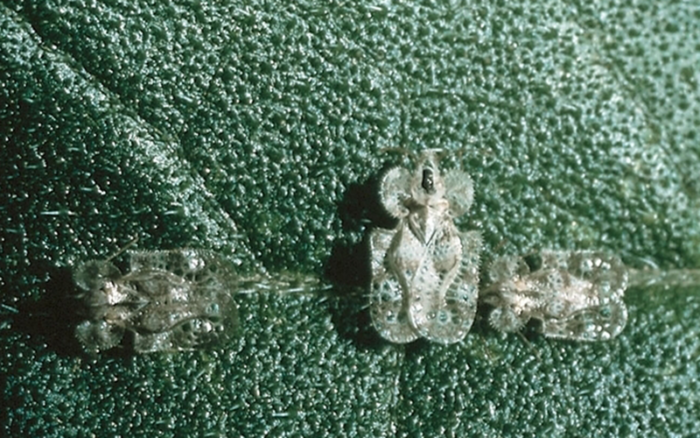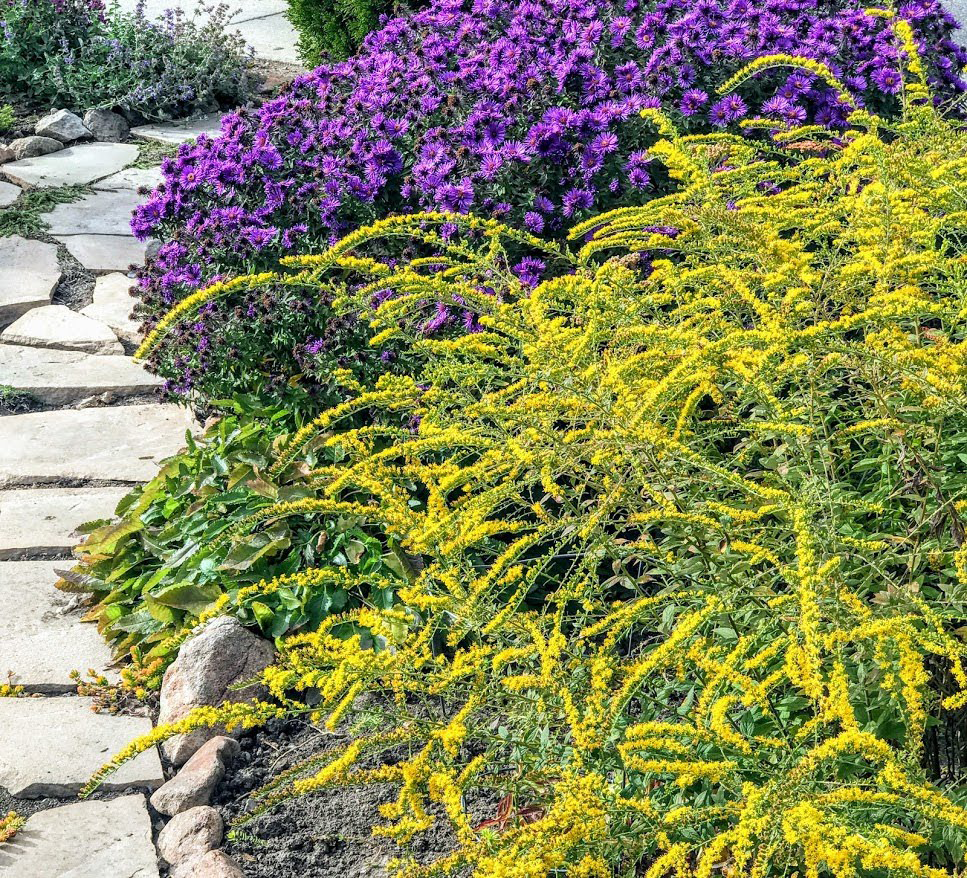
In the later months of the gardening season, gardeners anticipate finally seeing the blooms of fall perennials. Unfortunately, this is also when we may find evidence that chrysanthemum lace bugs have been feeding on these same plants through the summer.
Target plants
There are approximately 140 species of lace bugs (Tingidae) found in North America and feeding upon a wide variety of plant material. Most species prefer one host plant or family of plants. The length of an adult lace bug is typically 1/8 to 3/8 inch. Chrysanthemum lace bugs (Corythuca marmorata) feed on plants in the aster family, which includes many fall bloomers. Chrysanthemum (Chrysanthemum spp. and cvs., Zones 5–9), goldenrod (Solidago spp. and cvs., Zones 3–9), asters (Symphyotrichum spp. and cvs., Zones 4–8), sunflowers (Helianthus spp. and cvs., Zones 3–9), black-eyed Susans (Rudbeckia spp. and cvs., Zones 3–11), and globe thistle (Echinops spp. and cvs., Zones 3–8) are just a few of the late-season perennials susceptible to chrysanthemum lace bug damage. Feeding on the underside of leaves, their presence often goes unnoticed until the damage caused by their feeding becomes visible in mid to late summer when their population is at its peak.

Damage
Adult lace bugs and the spiny, dark-colored nymphs feed by inserting their needlelike mouth parts into the leaf tissue, sucking out chlorophyll and nutrient-filled juice from the plants. Their feeding creates small, mottled spots on the upper surface of the leaves, which are white, yellow, or chlorotic in color. Hiding on the underside of leaves protects lace bugs from weather and natural predators. Lace bug damage can be detected by observing premature leaf drop and discoloration on leaves with dark brown spots and stains on the underside. You may also be able to visually spot the small insects themselves.

Prevention
Plants can be protected by checking for lace bug presence in late spring and using organic controls before extensive damage occurs. Lace bugs are more likely to feed on plants located in hot, dry, and sunny environments, allowing their activities to fluctuate with climatic conditions. The use of composts and mulches to keep soil evenly moist is one technique to combat lace bug activity. Creating a landscape garden with variety instead of a monoculture will help reduce the spread of this insect, as they limit their diet to specific plants. And because they hide under leaf debris for the winter, a good spring cleanup in the garden will help to reduce lace bug populations by removing overwintering eggs, nymphs, and adults.
Treatment
Controlling lace bugs once you’ve identified them is not difficult. High-pressure water sprays directed at the undersides of the leaves will knock off the wingless nymphs, which then cannot return. Natural predators such as ladybugs, parasitic wasps, assassin bugs, pirate bugs, lacewing larvae, and various spiders are useful in keeping populations under control.
Neem oil, pyrethrin-based sprays, and insecticidal soaps are all nonresidual, organic products that are effective in controlling lace bugs. The underside of the affected leaves must be thoroughly coated with the products starting in the spring when the nymphs first appear. Repeat applications are necessary in order to achieve effective control. These products have little negative impact on humans or pets; however, one should only use them on the affected plants in order to limit exposure to nontargeted insects. Broad spectrum insecticides, while effective, should be avoided unless necessary.
Plant choice matters
When designing your garden, select plants that are healthy, hardy, and adapted to the area. Plants that are native to the region are often built to thrive in our specific conditions, and robust, healthy plants can fight off lace bug attacks more easily. Thoughtful planning with a diverse selection of plants will not only protect your garden from being overrun by this insect, but it will also reward you with a greater variety of color, texture, and seasonal interest.
Contact your local extension service for more information on how to combat this pest.
—Marti Neely, FAPLD, owns and operates Marti Neely Design and Associates in Omaha, Nebraska.
Fine Gardening Recommended Products

VegTrug Classic Cold Frame
Fine Gardening receives a commission for items purchased through links on this site, including Amazon Associates and other affiliate advertising programs.

Nesco Snackmaster Express Food Dehydrator
Fine Gardening receives a commission for items purchased through links on this site, including Amazon Associates and other affiliate advertising programs.

Gardener's Supply Company Summerweight Fabric Plant Cover
Fine Gardening receives a commission for items purchased through links on this site, including Amazon Associates and other affiliate advertising programs.



















Comments
Log in or create an account to post a comment.
Sign up Log in